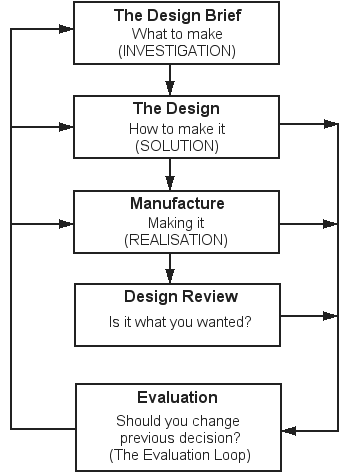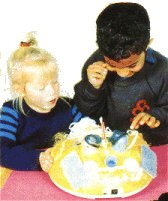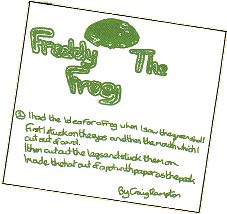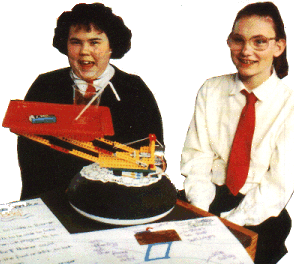
|
Feedback Form
| Introduction | Design | Ideas | Design & Control |
Project Suggestions |
| Design Process | Design Brief | Evaluation | The Design | Design Review |
The Design Process
Solving problems is at the heart of design work. The Design Process is a problem-solving strategy. It is inherent in all design. Using the Design Process structures a child's work without stifling creativity.

Interactive and Planned Design
There are two design extremes: Interactive and Planned. Most design is a mixture of the two.
Interactive Designing appears to be spontaneous and unstructured. In fact it is a process of passing through the Evaluation Loop many times. Interactive designs tend to be piecemeal. One stage usually helps to inspire the next.
 |
 |
| Interactive Design: After listening to the story "Scrap Yard Monster" these children decided to make a Roamer Alien (Design Brief. They decided to use deodorant can tops as eyes, a pair of goggles as space mask and Blu-Tack to fix these to the Roamer (Design). They fixed these in place (Manufacture). They decided their Alien needed a mouth (Evaluation). Returning to the junk box they found half a clothes peg which they thought would make a good mouth (Design). This process of Design, Manufacture and Evaluation continued until they were happy with the result (Design Review). | |
Planned Designs involve deciding all the details at each stage of the Design Process before moving to the next. The only journeys through the Evaluation Loop are to make minor modifications.
| Planned Design: Thirteen-year-olds Sarah and Donna decided with friends Lisa and Vicky which features their Roamer "Hostess" should have (Design Brief. They planned what each port should look like, what materials they were to be made from, how they were to be made and how they were to be fixed to the Roamer (Design). They mode the "Hostess" (Manufacture) then evaluated the result against the original plan (Design Review). |  |
 |
| Back to top |
|---|